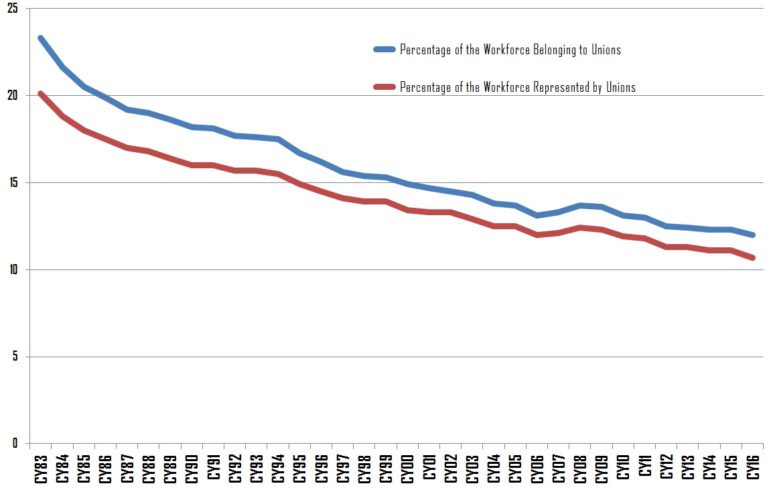
BLS data
The number of U.S. workers who belonged to labor unions fell by a quarter million nationwide in 2016, continuing a decline of worker power that has spanned decades.
The federal Bureau of Labor Statistics reported on Thursday that 10.7 percent of wage and salary workers belonged to unions, a 0.4 percent drop over 2015 and the lowest share of the workforce recorded over the 33 years for which detailed statistics are available. With 14.6 million union members, the U.S. now has 3.1 million fewer than it did when reliable data begins in 1983, when one in five workers belonged.
Public-sector workers continued to have far higher unionization rates than their private-sector counterparts, and from 24.7 percent in 2015 to 23.6 percent in 2016. New York’s union membership fell from 2.038 million to 1.942 million last year.
BLS state-level data only goes back to the year 2000, and 2016 displayed the second-lowest unionization rate on record; only the 23.2 percent seen in 2012 was lower.
“Simply put, workers’ wishes to engage in collective bargaining far exceed their ability to do so because of our inadequate laws,” Lawrence Mishel, president of the Economic Policy Institute, said in a statement. “The resulting erosion of collective bargaining exacerbates our decades-long problems with wage stagnation and inequality, hurts not only union workers but also nonunion workers whose wages are higher in industries and occupations with high union density, and weakens workers’ voice in our political life and democracy.”








